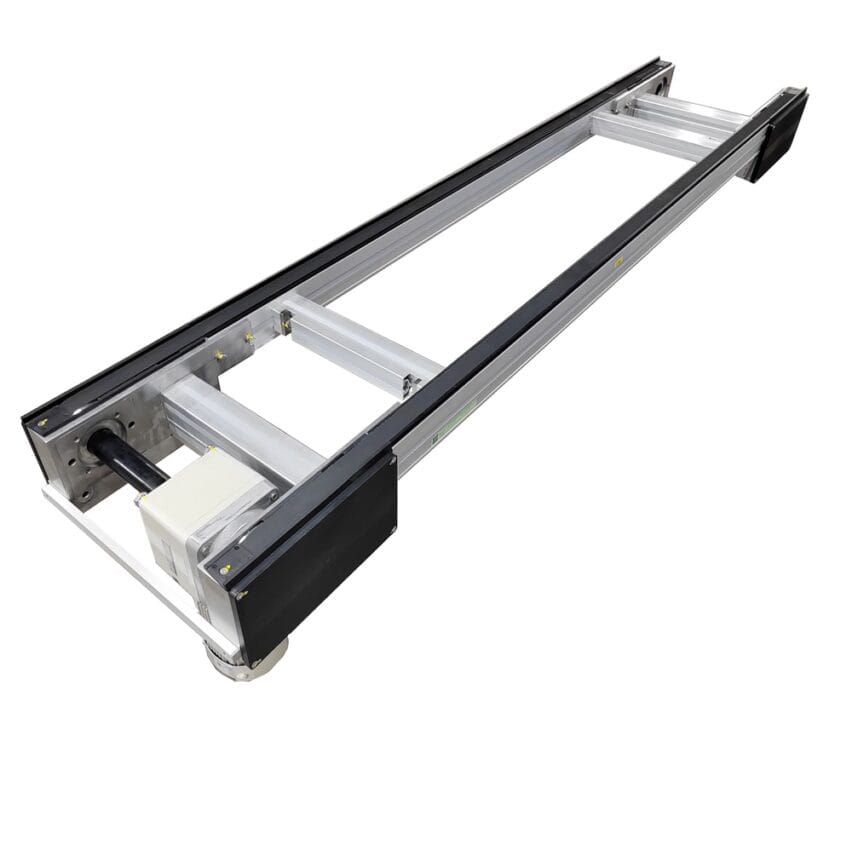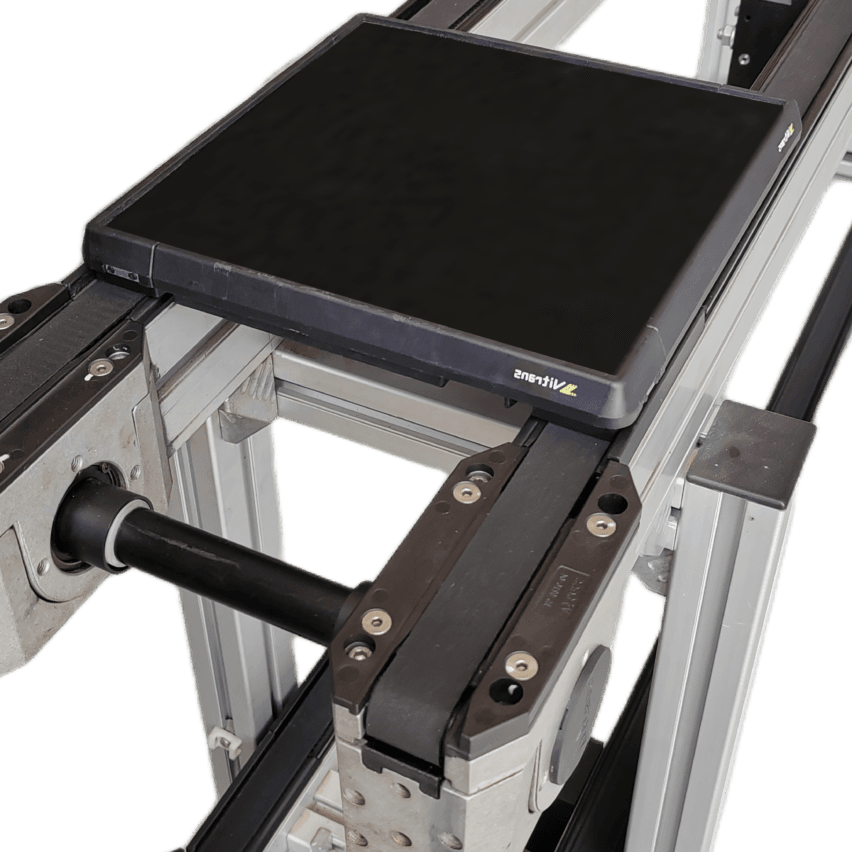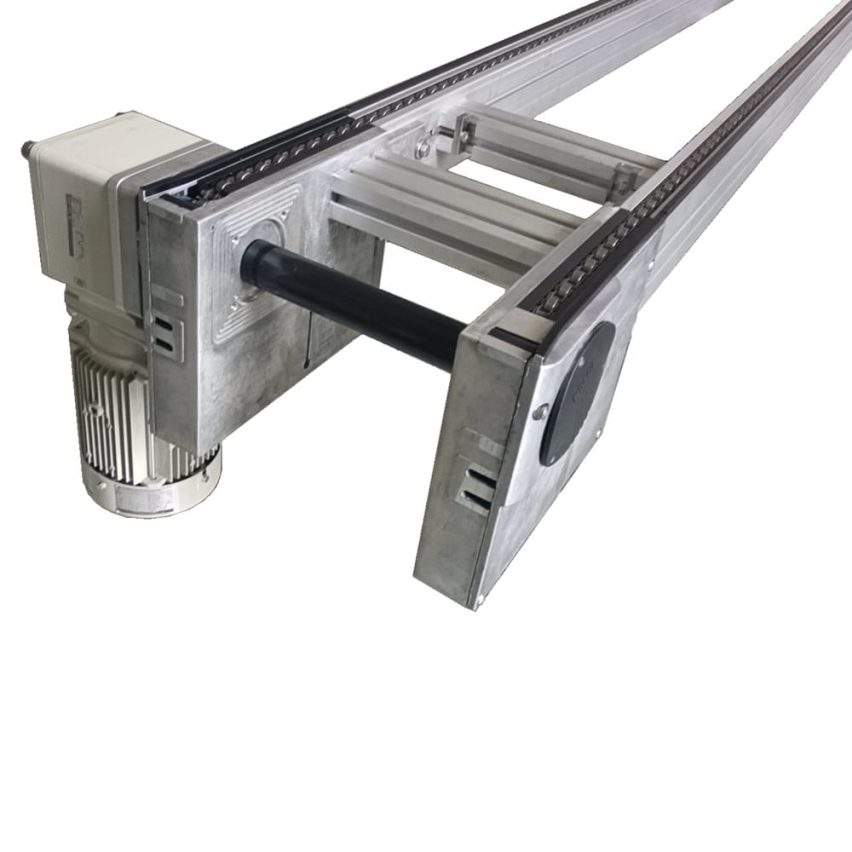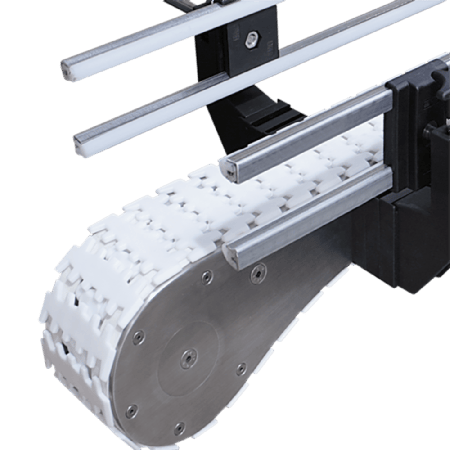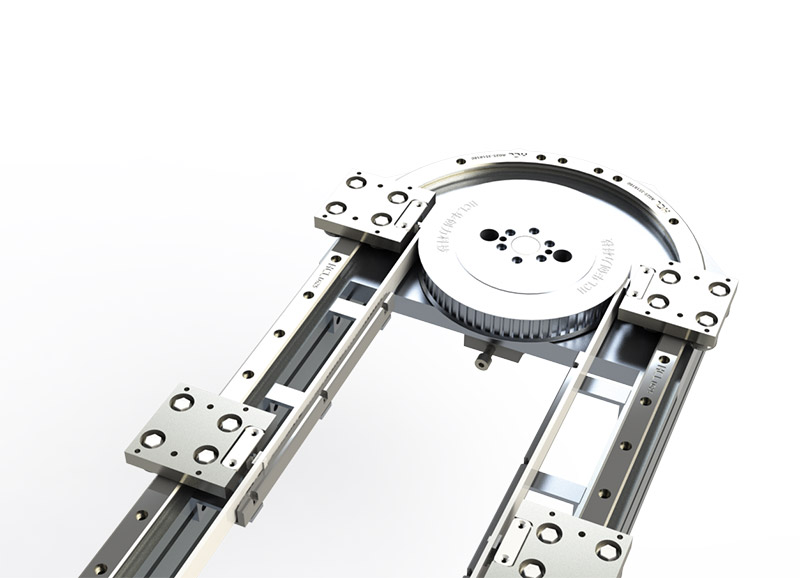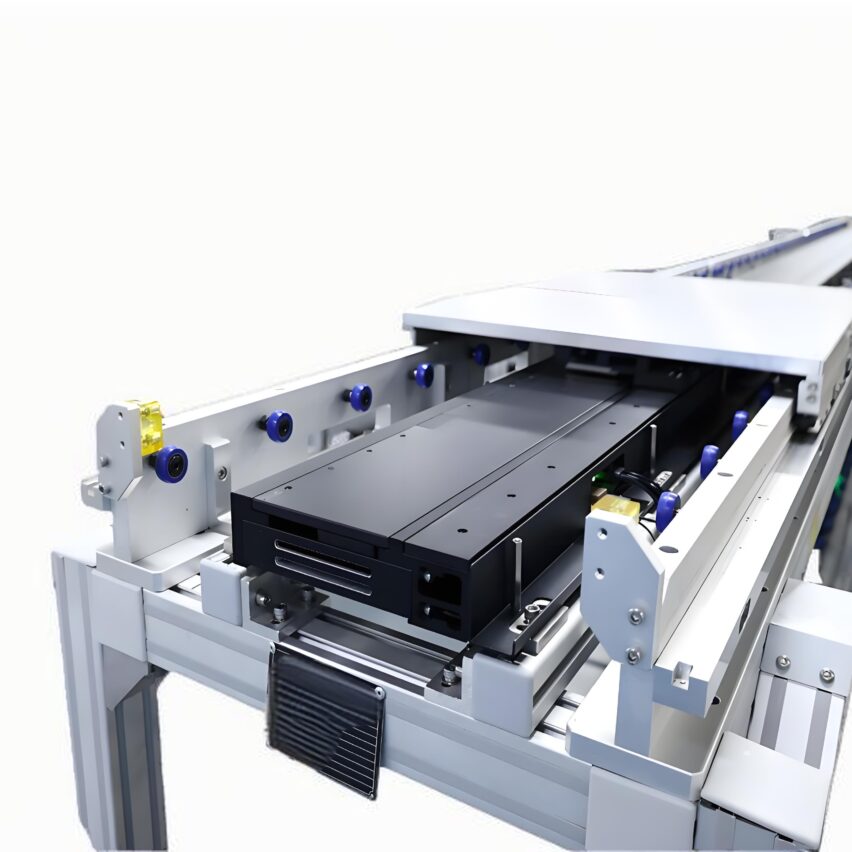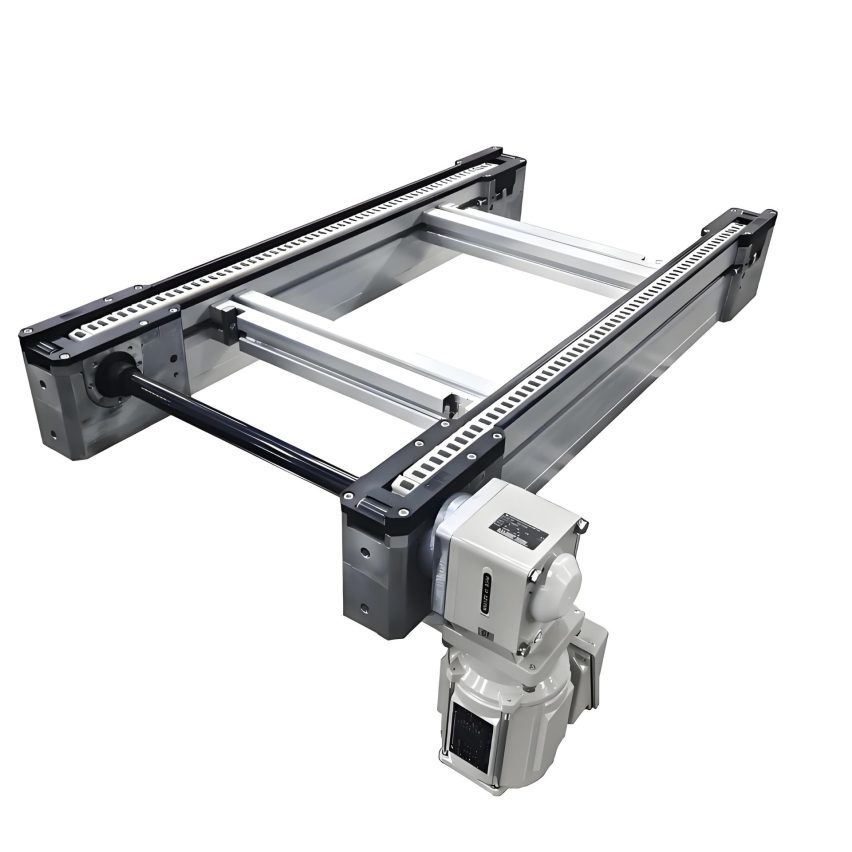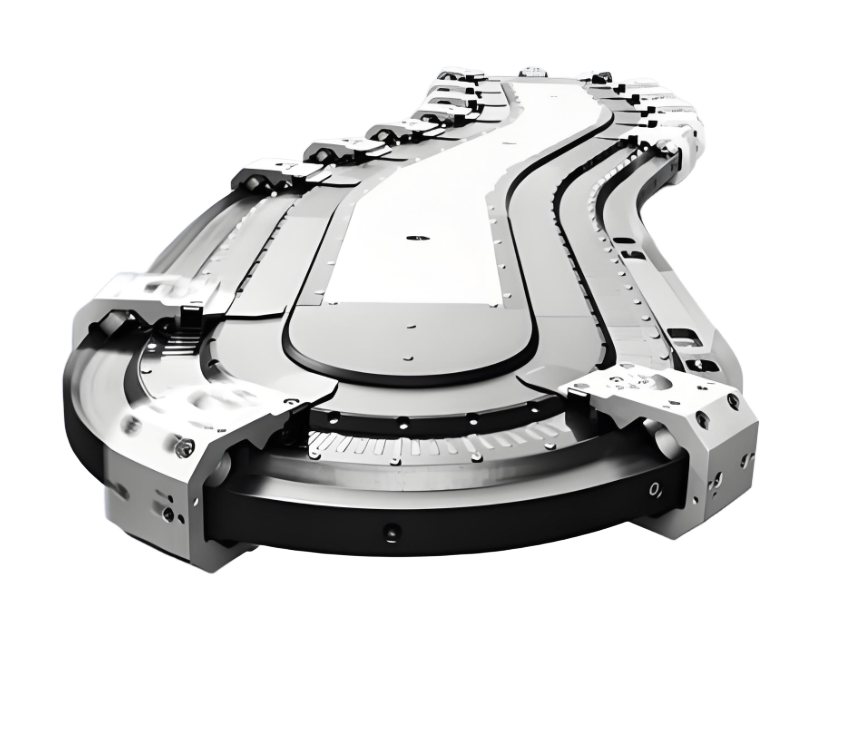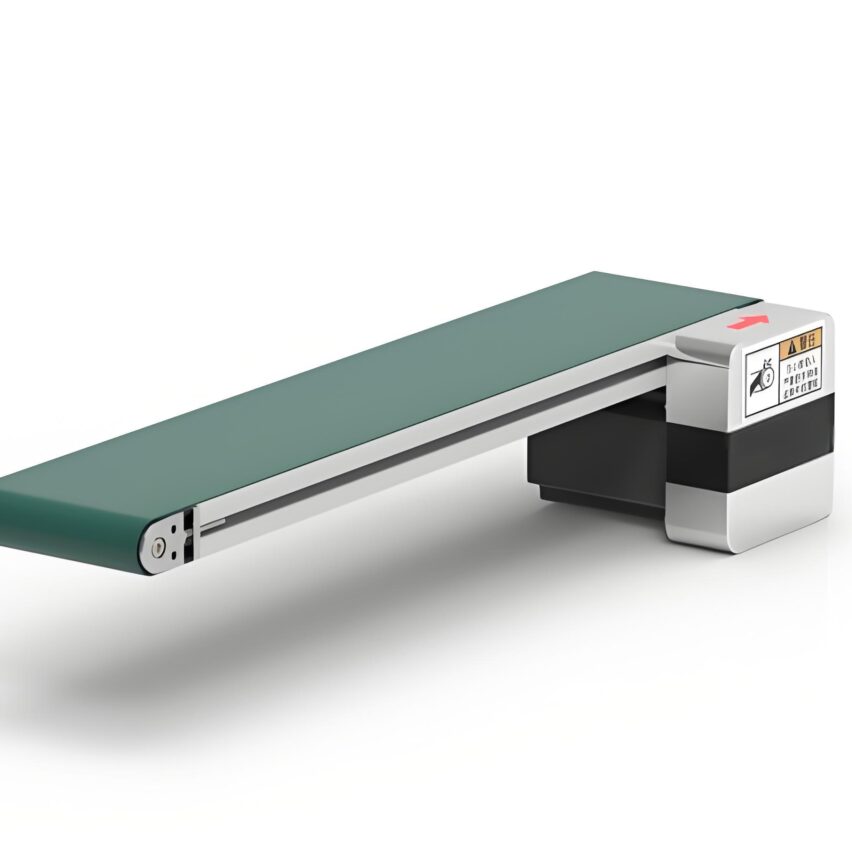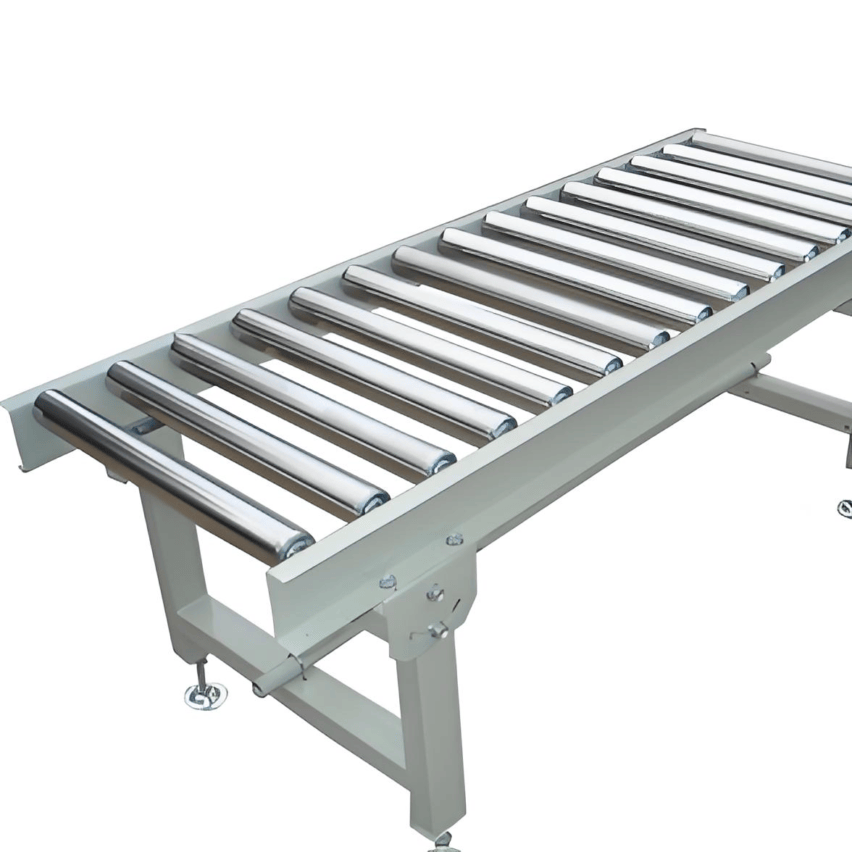While the cost of industrial land continues to climb at an average annual rate of 121 TP3T.A deeply integrated double-deck doubler chain system frees up 37% of floor spaceAt the same time, the flexibility of the production line is increased by 300% through non-standard design - not only an upgrade of conveying technology, but also an algorithmic response of the manufacturing industry to fight against spatial constraints.
I. The core logic of non-standard integration: cracking the industrial impossible triangle of space-efficiency
1. The Law of Resilience for Modular Architecture
- Dynamic scalabilityThe line length can be changed by adding or removing conveyor modules, adding steering, lifting or sorting units, and realising rapid reconfiguration of the production line form. An electronics factory test shows that the production line adjustment time from the traditional 72 hours compressed to 8 hours.
- Variable layer design: Switching single, double or multi-layer structure according to capacity demand, e.g. automotive welding line switched to three-layer conveyor in peak season, capacity increased by 40%.
- interface standardisation paradox: Although there is a lack of uniform standards for the industry, thereserved expansion interface(e.g. robot mounting base, sensor slots) can enhance cross-generation compatibility and reduce future retrofit costs Super 30%.
2. The war of annihilation of hidden costs
- Space compression algorithms: Upper production layer and lower empty board return to form a closed loop, cylinder jacking panning machine (output force ≥ board weight × 1.5) to eliminate the end of the buffer redundancy, measured savings of 37%.
- Energy consumption black hole crackingGravitational potential energy recovery system + aviation aluminium frame (steel frame weight 35%), drive energy consumption straight down 28%, 20dB lower noise than traditional hydraulic system.
personal insight: 80% companies only focus on the obvious parameters of the equipment, the actualHidden cost annihilation is the essential value of off-standard integration--A new energy vehicle enterprise saves $3.6 million in annual land costs through this system.
Second, industry customisation: the technical edge of non-standard integration
▎ Automotive Manufacturing: The Balancing Act of Heavy Duty and Precision
- Mechanical topology optimisationCarbon steel chain is used for heavy load section (carrying 800kg door), and engineering plastic chain is switched for light load section to avoid jumping teeth from overload;
- Anti-Skew System: Polyurethane block + hydraulic damper absorbs 85% collision energy, positioning accuracy ±0.5mm.
▎ Biopharmaceuticals: the ultimate defence of aseptic integration
- Hygienic closed-loop design: FDA sealing ring + 0.5MPa closed-loop spray, microbial residue <0.1g/m²;
- Self-cleaning guides: 50μm ultrasonic vibration plate eradicates syrup residue, clean validation pass rate 100%.
▎3C Electronics: The Annihilation of Static and Microvibration
- Anti-static ecosystem: Aluminium profile body + Carbon brush deflector copper row (resistance 10⁶-10⁹Ω), electrostatic discharge <0.1 sec;
- High Frequency Tremor Suppression: Combination of gas spring + linear guide slider to counteract the instantaneous vibration of jacking.
III. The life-and-death bottleneck of technology integration: compatibility and synchronisation breakthroughs
1. Compatible programmes for cross-vendor integration
| conflict point | Traditional risk | nonstandard positive solution |
|---|---|---|
| Chain Pitch Differences | Replacement parts cost ↑45% | Mandatory harmonisation standards: Contractually agreed DIN/ISO link parameters |
| Motor Interface Conflict | Loss of $80,000/day for downtime modifications | Protocol Conversion Module: Development of CAN bus-Profibus gateway |
| Control Logic Split | PLC programme conflict rate ↑32% | OPC UA Unified Platform: Connecting the data layers of different brands of PLCs |
2. Algorithmic revolution in upper and lower layer synchronisation
- mechanical synchronisation: Independent motor to single motor + dual output reducer to eliminate speed difference;
- Electrical compensation: Encoder feedback + PLC synchronisation module, real-time adjustment of speed deviation <0.1rpm;
case-based evidence: A parts factory after the transformation of the conveyor efficiency ↑ 40%, failure rate ↓ 65%.
IV. Intelligent Operations and Maintenance: An Economic Moat for Non-Standard Integration
1. Cost reduction models for predictive maintenance
make a copy of├─Primary stage: domestic chain + imported servo (cost ↓35%) ├─Intelligent advanced: add vibration sensor→prejudice guide shaft bias wear (error <±3μm) └─Depth integration: AI learning cylinder wear curve, failure interval from 9 days → 60 days`` *Economic value*: annual maintenance costs are reduced by $$12,000 straight away, with an ROI cycle of <14 months. **2. Flexible Manufacturing Premium Formula** **Space Mobility × Failure Decay Rate = Smart Manufacturing Competitiveness** - Every 1 metre of compressed length creates annual revenue of $12,000; - The modular design enables the production line modification time to be reduced to the traditional 30%, adapting to the market where the product iteration cycle is shortened by 50%. --- ### **V. Exclusive data: undervalued off-price** - **Land leverage effect**: 2,000 m² plant to achieve the traditional 5,000 m² capacity, land cost annual savings of $3.6 million; - **Energy Efficiency Black Hole Crack**: Triple speed engineering plastic chain (made in Suzhou) with aluminium profile guide rail (118×100), friction resistance ↓37%; - **Manpower streamlining code**: fully automated reflow system reduces 3 porters, annual labour cost savings of $150K. --- ### **Self-questioning: the decision-maker's non-standard three questions ** **Q1: How can a non-standard system solve the cross-vendor compatibility deadlock? ** A: **Three layers of defence system**: 1. **Hardware Layer**: Contractual mandatory agreement on DIN/ISO standards (e.g. chain pitch, motor flange size); 2. **Protocol layer**: deploy OPC UA unified platform, compatible with Siemens/Mitsubishi and other mainstream PLC; 3. **Data Layer**: build IIoT data centre to break equipment data silos. **Q2: How to balance customisation and cost in high-mix production? ** A: **Modular cost equation**:Customisation Cost Threshold = Base Module Price × (1 + Dedicated Module Percentage)
■ Dedicated module <30%: flexible adaptation with adjustable guides/quick-change sprockets
▪ Dedicated module >60%: customisation of heavy-duty section + standardisation of light-duty section for cost reduction".Q3: How can off-standard systems adapt to future process changes?
A.Allow for three major redundancies::
- power redundancy: Reserve 30% margin for motor power;
- spatial redundancy: Spacing of jacking points ≥ 2 x length of workpiece plate (anti-stacking);
- Control redundancy: PLC I/O points reserved for 20% backup.
The essence of non-standard integration is "the product of a spatial algorithm and a flexible response".: the next decade.Hidden cost annihilation capabilitywill reconfigure the manufacturing value equation - those that tame uncertainty with modular architecture will tear growth cracks in the triple constraints of land, energy and manpower.

